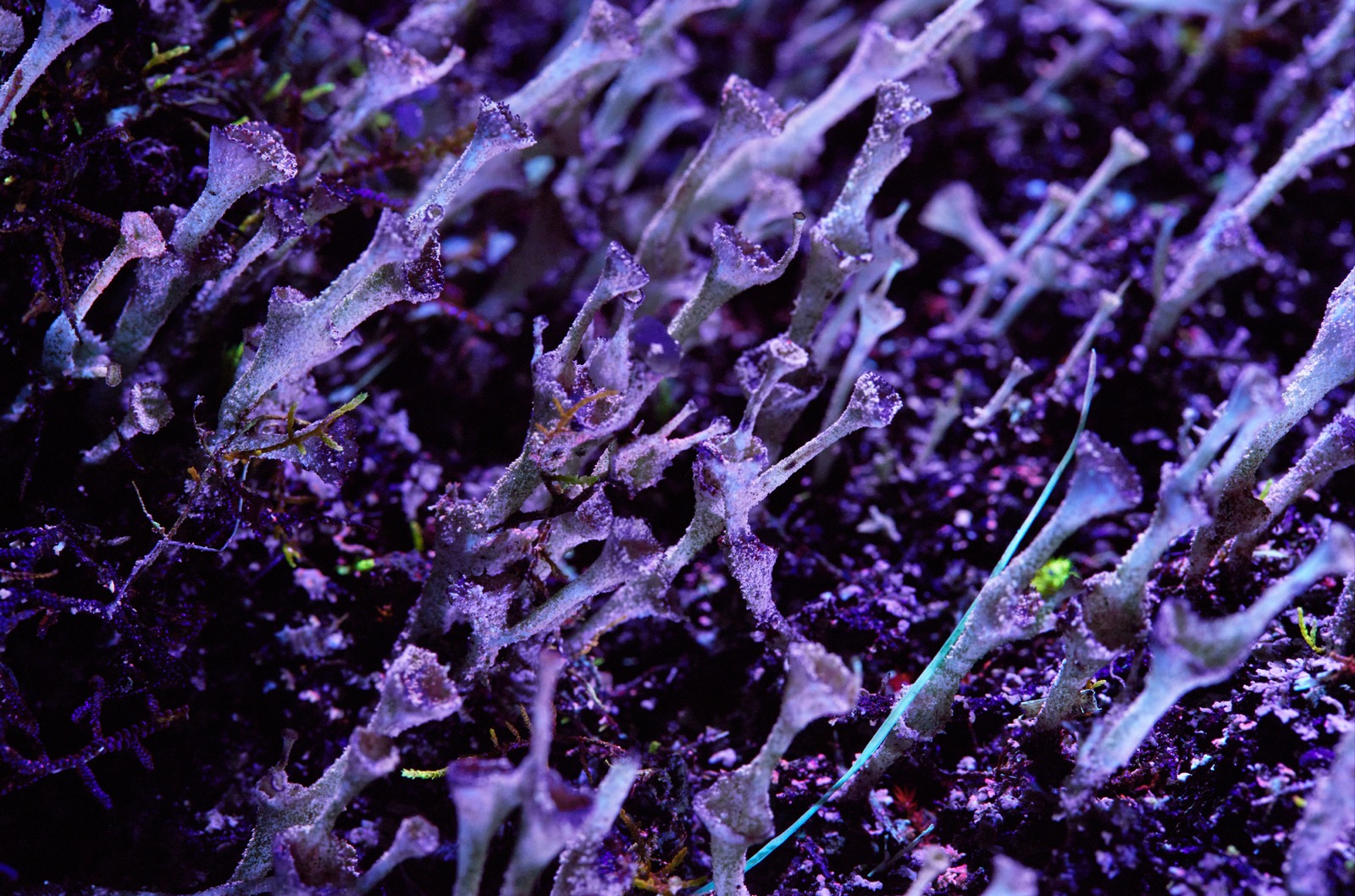These were some of my first staccato impressions of Broken Spectre, a piece by photographer Richard Mosse working alongside composer Ben Frost and cinematographer Trevor Tweeten. As the 70 minute movie is looped, when you enter the piece, you drop in at random point and have to surrender yourself to the sensory overload of it all. Instead of a narrative pathway Mosse goes close and then zooms out in order to “Make the invisible visible”. Whilst there is no conventional “Start Point”, there are distinct segments. There is a prosaic part whereby tourists float down the river simply observing. There is an undisturbed tranquility, that looks to reference the beauty conjured by Morricone in his soundtrack to “The Mission”.
Humankind’s intervention on the Rainforest then becomes apparent. We follow Cattle on a raft and then to the abattoir. They are then prodded down a gangway and ultimately stripped of everything. Raw and Bloody amidst the Lynchian sounding hum of industrial machinery. The camera then reveals Gold mining with pressure hoses, Frost puts the roar of the machines in the foreground contrasted by a gentle trickle. The seemingly zen action of panning for Gold contrasted with the topological ruin caused in obtaining it. The next destructive vision is then that of chainsaws in tandem carving the hearts out of ageless old trees. Then Fire, vast swathes of forest burned out. Then the audience sees the even larger context of this. A vast emptying. An aerial panning shows a few remaining trees dotted sparsely in blood red by the Multispectral camera (reflecting off the green chlorophyll of the trees).Frost exerts rising synths to unveil the horror. It doesn’t relent. We wait for the escalation to resolve. But it keeps going. Pointedly. A horror movie without end amidst the blood red being trammelled. The Multispectral camera adds to this. Showing a higher degree of degradation than the Infrared film employed in Mosse’s piece on the Congo.
It flicks back to regular life, with cowboys amongst fallen trees with their cattle. Seemingly just living their lives. But we have glimpsed the bigger destruction caused by them, deforestation and Gold mining. Frost uses Morricone style guitar to reinforce this. We’re no longer in the zoomed out horror movie. We see a way of life. With kids playing with toy cattle too. A contrasting way of life is represented by a Palimiu tribe member in an audience complaining of Bolsonero and demanding his protection. It is an impassioned and strong plea that gives way to devastation. Then their strength is put back on. They implore Mosse: “Don’t film me for nothing”
He started this project with a different aim. Zoomed in, capturing rainforest biome on a UV Camera in Peru and Ecuador. He intersperses these human tales and the bigger picture with film of this. It serves as the beating heart of the jungle amidst this chaos. Its up close shots look like organs with embryonic and muffled sound that sounds insulated from the human world. Frost employs audio that picks up the real sounds that go with this. It’s effective as it feels like the very heart of the forest, at the opposite end of the spectrum from the aerial destruction. Mosse felt compelled to zoom out from these close ups himself to go to Brazil and reveal the state of the Amazon. The photographs that precede the movie help the audience understand this. They cycle between aerial shots of the destruction wrought upon the rainforest by encroaching palm forest, gold mining (dredges and Hydraulic Mining), Cattle farming and heavy boats vs the way tribes like the Enawene-Nawe respect and renew the land. Even seemingly green ventures like hydropower is revealed to be destructive as it shows vast swathes of trees flooded.
 https://www.nastymagazine.com/wp-content/uploads/2017/11/Elodie-Chapuis-Origami.jpg
1005
1500
Editor Nasty
https://www.nastymagazine.com/wp-content/uploads/2015/02/new-logo-basker-WHITE4.png
Editor Nasty2017-11-29 09:35:292017-11-29 09:57:45Origami
https://www.nastymagazine.com/wp-content/uploads/2017/11/Elodie-Chapuis-Origami.jpg
1005
1500
Editor Nasty
https://www.nastymagazine.com/wp-content/uploads/2015/02/new-logo-basker-WHITE4.png
Editor Nasty2017-11-29 09:35:292017-11-29 09:57:45Origami














